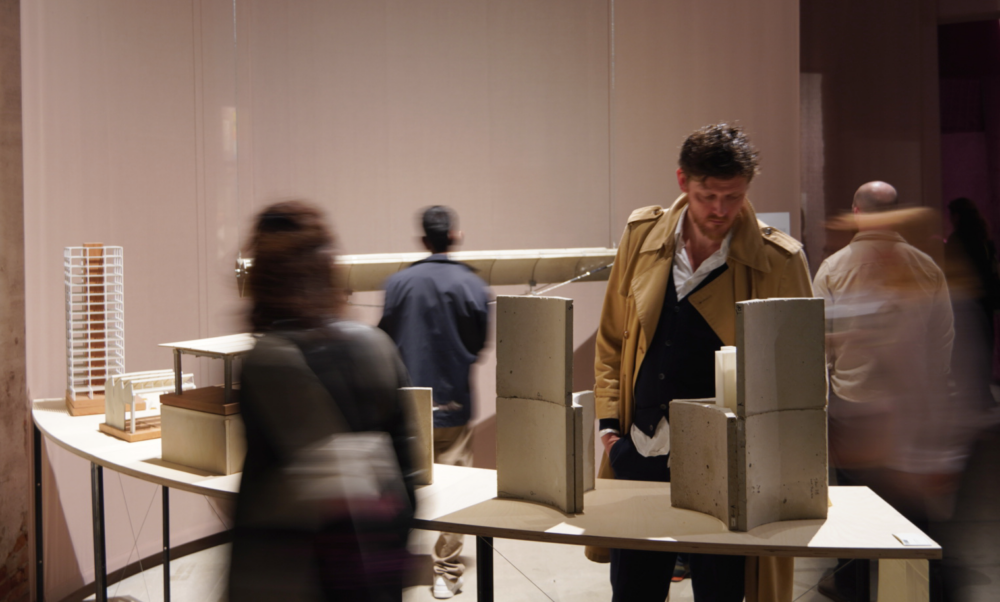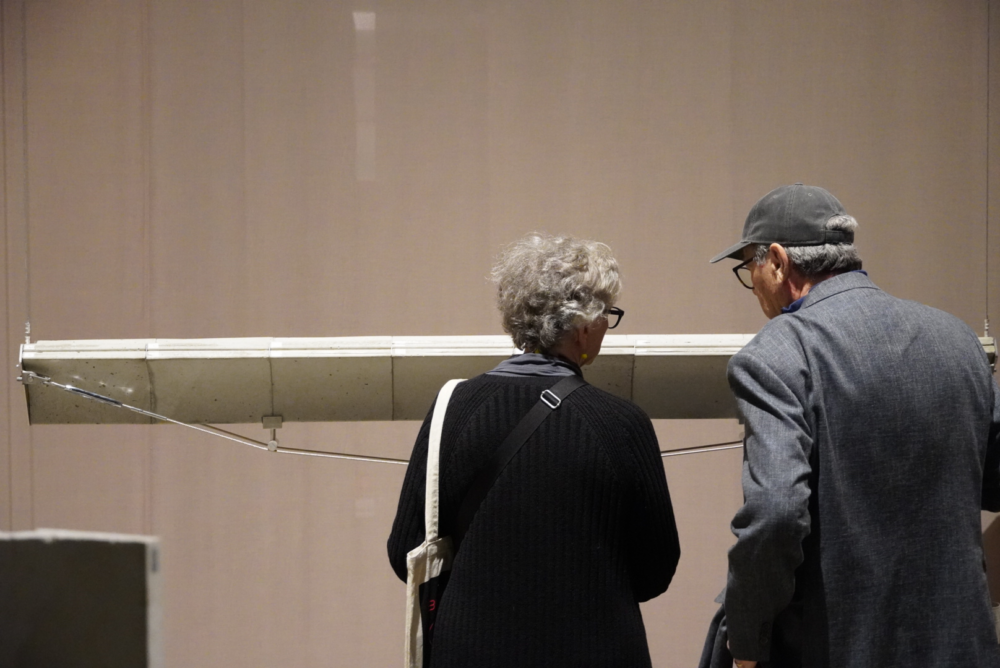Innovative Building Reuse Technology, Pixelframe, Showcased to Global Community at Architecture Biennale
May 9, 2025

Pixelframe exhibit at the 2025 Biennale. Photo by Future Assemblies.
Concrete is a ubiquitous construction material due to its accessibility, strength, durability, and affordability, but its production, which involves cement, is carbon-intensive and requires high temperatures and emissions in its production. Despite 360 million metric tons of concrete construction waste being sent to landfills in the United States yearly, global demand for new concrete is increasing – with dependence on concrete only expected to rise over the next 50 years. Innovations in concrete reuse, especially given the concrete industry’s vast scale, can accelerate a more sustainable architecture, engineering, and construction sector and move the needle on climate progress. A team of MIT researchers is developing such an innovation, called Pixelframe – currently exhibited at the Venice Biennale’s 19th International Architecture Exhibition (curated by Carlo Ratti), the largest architecture festival in the world. The Pixelframe showcase at the Biennale, entitled From Liquid to Stone: A reconfigurable concrete tectonic against obsolescence, reflects the festival’s central themes of collaboration, invention, intelligence, and adaptability.

Inge Donovan, Jenna Schnitzler, and Professor Caitlin Mueller at the 2025 Biennale. Photo by Future Assemblies.
Collaborative Approach with Industry Feedback
“The Architecture Biennale brings together a global community of scholars, experts, practitioners, and students who are curious, action-oriented, and willing to push boundaries and explore creative solutions to some of the world’s most pressing challenges. We are absolutely delighted to have the opportunity to share our work at this internationally recognized festival,” said Caitlin Mueller, Associate Professor of Civil and Environmental and Architecture, MCSC Associate Director, and Director of the Digital Structures Research Group, where Pixelframe was developed as a research project and later spun out into a startup.
Pixelframe, developed with support from the MIT Climate & Sustainability Consortium (MCSC), is a modular constructive system that allows concrete building elements to be disassembled and reused, reducing the environmental impact of the structural system. In addition to Professor Mueller, the team is led by graduate students Inge Donovan, Jenna Schnitzler, Pitipat Wongsittikan, and Keith J Lee. Throughout the development process, the team has collaborated closely with industry experts at Holcim, a leader in innovative and sustainable building solutions, and Prologis, a leader in logistics real estate with a focus on high-barrier, high-growth markets. Incorporating industry feedback perspectives has helped ensure the Pixelframe technology can become implementable, widespread, and effectively adopted – leading to a positive impact sooner.

Guests explore the Pixelframe design at the 2025 Biennale. Photo by Future Assemblies.
Centered on Circularity
“Pixelframe is designed to support a future where buildings are transformed from static endpoints of material flows into intelligent assemblies of efficient, reusable elements,” said Donovan, who is one of the presenters at the 2025 Biennale in Venice, Italy.
This focus on circularity aligns directly with the Biennale’s manifesto calling for its participants to create exhibits that are bold examples of circular design that offer lasting sustainability legacy. The event’s goal to eliminate waste, circulate materials, and regenerate natural systems is exactly what Pixelframe aims to accomplish – at a macro scale as well at the Biennale itself. With a sleek system of optimized shapes that can be fully demounted and reused, Pixelframe underscores the Biennale’s charge that architecture and the built environment can coexist harmoniously with the planet.
“We wanted to create a system that is both beautiful and functional, and that challenges stakeholders to envision a world where building materials are not landfilled after first use, but rather, precious objects with aesthetic value,” said Schnitzler. “With our system, we hope to enable structural element reuse, which is an important method for reducing embodied carbon in the building industry.”
The Pixelframe showcase at the Biennale, which was curated by MIT scholar Carlo Ratti, is centered on a prototype and shows scale models of the post-tensioned, modular system, as well as speculative designs for future buildings and full-scale assemblies of digitally linked modules. An innovative mobile interface (mobile only) allows visitors to engage with the past and futures of the modules, which have been reused multiple times, by scanning an RFID chip that accesses their digital twin in a digital material bank. The exhibit highlights that concrete is no longer just a liquid poured once and cured on site, but can be more akin to stone, retaining value across multiple lifespans.
Full-scale Prototype
While preparing for the Biennale, the Pixelframe team has also been hard at work fabricating and designing a full-scale prototype slated to be assembled later this year. This important milestone follows the successful half-scale prototype built in 2023.
“In buildings, structural loads scale exponentially as you move through scales, so we’re very interested to see what happens when we begin testing of a full-scale, 20-foot beam,” the team members explained.
In addition to helping inform next steps, the full-scale prototype will present another opportunity to exhibit the work – and continue to educate audiences about building element reuse and spark new ways of thinking about a circular building industry. Beyond the full-scale beam prototype, the team is actively seeking partners for pilot projects and full scale building demonstrators.
